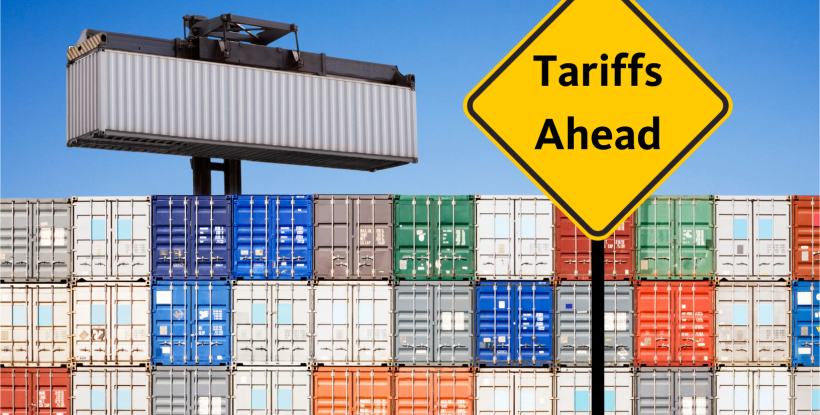As we begin 2025, the University of California's (UC) supply chain faces myriad challenges and uncertainties. Proposed tariffs (see below) could significantly impact the price and availability of products that the University acquires. Additionally, shifts in immigration and labor policies could influence the University’s ability to obtain essential products and services.
To better understand the broader challenges confronting the UC supply chain, UC Systemwide Procurement conducted a comprehensive survey and performed follow-up interviews with key suppliers. This initiative aimed to gather insights into their perspectives and forecast for the upcoming year.
Supplier Optimism and Growth Forecasts
Encouragingly, more than 85% of UC suppliers are forecasting growth for their overall business in 2025. Key reasons for this optimism include:
- Increased Demand: A resurgence in demand from higher education customers is anticipated as institutions continue to adapt to changing educational models.
- Reshoring Manufacturing: A potential trend toward reshoring may enhance domestic supply chains, reducing dependency on international sources.
- Shift to In-Person Work: The continued transition from remote to in-person work environments is expected to drive demand for various products and services.
Concerns Regarding Tariffs
Despite the optimistic outlook, more than 60% of suppliers expressed being either “somewhat concerned” or “very concerned” about potential tariffs in 2025 and beyond. Conversely, over 20% of suppliers indicated they were not concerned about tariffs, while the remainder were uncertain.
The most common impacts identified by suppliers regarding tariffs were:
- Increased Prices: Anticipated price hikes that could strain budgets and financial resources.
- Price Volatility: Fluctuations in pricing that complicate budgeting and procurement strategies.
Strategic Adjustments by Suppliers
One-third of suppliers reported that the prospect of tariffs has prompted them to reconsider their sourcing, manufacturing, or distribution strategies. Notable changes include:
- Increasing Domestic Sources: A shift towards more domestic suppliers to mitigate tariff risks.
- Diversifying Sourcing Locations: Expanding and diversifying the countries from which they source materials and products.
- Accelerated Purchases: A proactive approach to purchasing in the near term to avoid potential future tariffs.
Purchasing Recommendations
- Consider alternate products that are not impacted by tariffs.
- The more lead time you can give the suppliers the better.
- Contact your local procurement department for support.
Ongoing Fluidity of Policies
The policies affecting the UC supply chain remain dynamic, and the associated risks are expected to evolve in both severity and impact areas. To help the UC community make more informed decisions and mitigate these risks, UC Systemwide Procurement regularly releases the Price and Supply Risk Forecasting Report (Procurement portal login required) which provides in-depth information on current supply chain complexities and trends. Please consult the Forecasting report for the most up-to-date details on these evolving landscapes.
Proposed tariffs:
- 10% tariff on all imports from China and ending de minimis treatment of all imports from China.
- 25% tariff on all imports from Mexico and a 25% tariff on all imports from Canada (excluding energy resources under HTS codes 2709, 2710, 2711, and 2716, which face a 10 percent tariff).
- Expansions to the Section 232 steel and aluminum tariffs
- Ending the country exemptions for existing steel and steel derivatives tariffs, which increases imports subject to the tariffs from $5.5 billion to $34.6 billion (excluding interactions with tariff rate quotas).
- Ending the country exemptions for existing aluminum and aluminum derivatives tariffs, which increases imports subject to the tariffs from $6.1 billion to $18.5 billion (excluding interactions with tariff rate quotas).
- Increasing the tariff rate on aluminum and aluminum derivatives from 10 percent to 25 percent.
- Expanding the steel and aluminum derivatives list to other steel and aluminum derivative articles, which increases steel imports subject to tariffs by $38.1 billion and aluminum imports by $6.2 billion.
- Excluding the expanded articles outside chapters 73 and 76. (Note: We excluded due to lack of data on the steel and aluminum content of these products. The excluded imports totaled $99.8 billion in 2023; however, the tariffs would not apply to the full import value. For example, the tariffs would apply to the metals content of tennis rackets, fishing reels, and some types of furniture.)
- 25% tariff on autos, which we illustrate by applying the tariff to imports of motor vehicles and motor vehicle parts under HTS codes 8703 (valued at $224.4 billion in 2024) and 8708 (including, where possible, parts related to 8703 only, valued at $61.8 billion in 2024).
